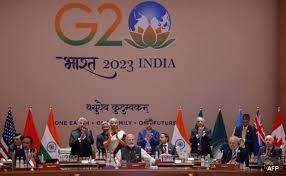WTO Dispute Settlement System : G20 Summit

The G20 leaders recently expressed their commitment to conduct discussions for having a “fully and well-functioning” dispute settlement system of the World Trade Organisation (WTO) by 2024.
- WTO Dispute Settlement Mechanism is the main WTO agreement on settling disputes.
- The General Council of WTO convenes as the Dispute Settlement Body (DSB)to deal with disputes between WTO members.
- The DSB has the authority to:
- establish dispute settlement panels;
- refer matters to arbitration, adopt panel, Appellate Body and arbitration reports;
- maintain surveillance over the implementation of recommendations and rulings contained in such reports;
- authorise suspension of concessions in the event of non-compliance with those recommendations and rulings;
- Ideally disputes are resolved through negotiations.
- If this is not possible, WTO Members can request the establishment of a panel to settle the dispute.
- The panel will issue a report, which can subsequently be appealed before the WTO’s Appellate Body on questions of law.
- Appeals are handled by the permanent seven-member Appellate Body which is set up by the DSB and broadly represents the range of WTO membership.
- It hears appeals from reports issued by panels in disputes brought by WTO members.
- The Appellate Body can uphold, modify or reverse the legal findings and conclusions of a panel.
- If a WTO member does not comply with recommendations from dispute settlement, then trade compensation or sanctions, for example in the form of increases in customs duties, may follow.




